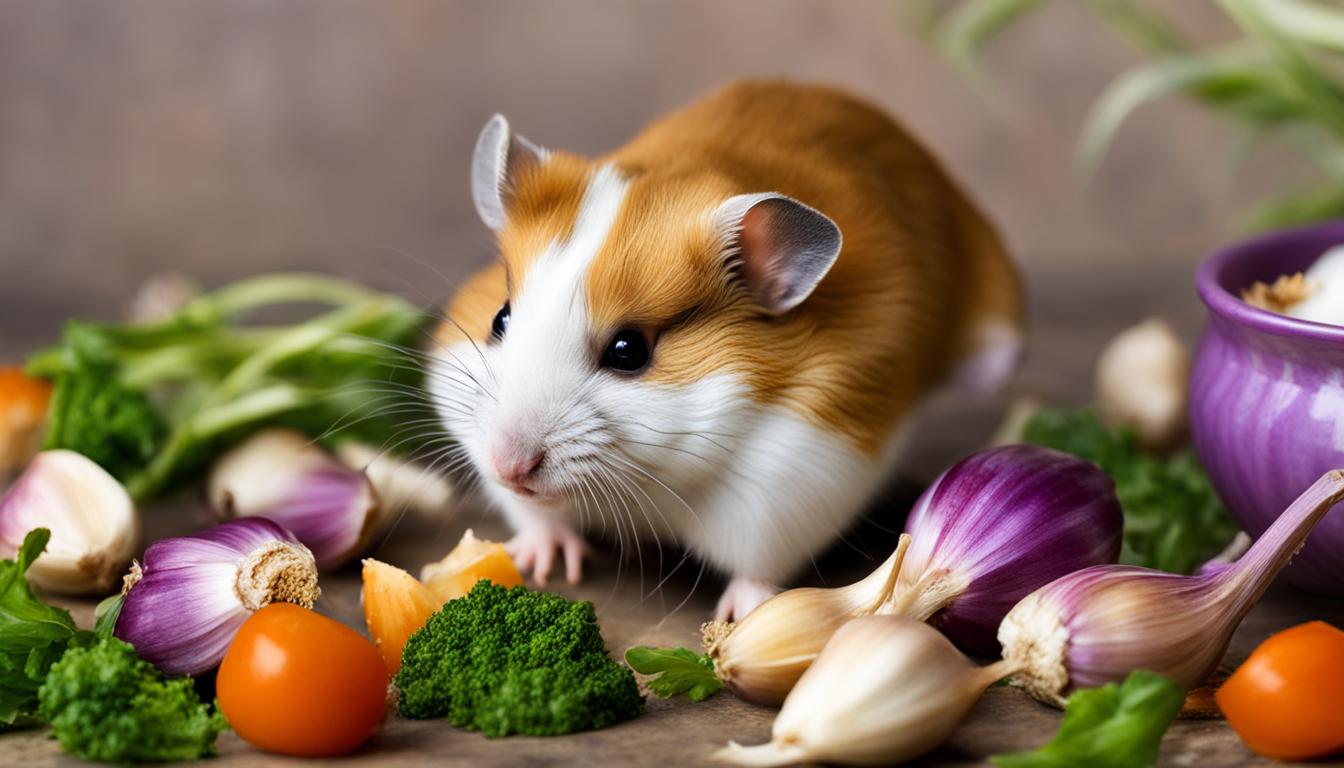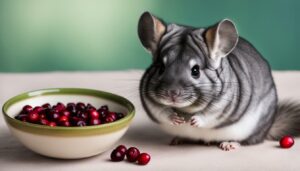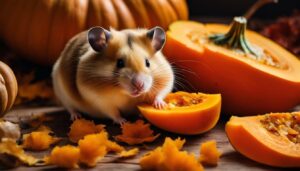Hamsters require a specific diet to maintain their health and longevity. While there are many foods that can be safely consumed by hamsters, garlic should be avoided. Garlic contains compounds that can cause indigestion, blood disorders, and even death in hamsters.
It is important to understand the dietary needs of your furry friend to provide proper nutrition and avoid potential health risks.
Key Takeaways:
- Garlic should be avoided in a hamster’s diet due to its potential to cause indigestion and blood disorders.
- Providing a well-balanced diet of hamster-specific pellets, occasional fruits and vegetables, and fresh water is essential for your hamster’s health.
- Consult with a veterinarian to ensure your hamster’s diet meets their specific needs.
- Watch out for other hazardous foods and avoid feeding them to your hamster.
- If your hamster accidentally consumes garlic, seek immediate veterinary attention.
Key Takeaways:
What Can I Feed My Hamster?
When it comes to feeding your hamster, it’s important to provide them with a diet that meets their nutritional needs.
The foundation of their diet should be a high-quality hamster food or rodent block, specifically formulated to provide the right balance of nutrients.
Brands like Oxbow offer excellent options that can support your hamster’s health and well-being.
In addition to the main diet, you can also offer small amounts of fruits and vegetables as occasional treats. These should be well-washed and cut into small, bite-sized pieces.
Some safe options include blackberries, peaches, mango, and dandelion greens. It’s important to remember that these treats should only make up a small portion of your hamster’s overall diet.
Monitoring your hamster’s consumption is key to ensuring they stay healthy. If you notice any digestive issues or changes in their behavior after introducing new foods, it’s always a good idea to consult with a veterinarian for guidance.
What Can I Feed My Hamster?
Foods to Avoid for Hamsters
When it comes to the diet of your beloved hamster, it’s important to know which foods should be avoided.
While hamsters can enjoy a variety of tasty treats, there are certain foods that can be harmful to their health. One such food is garlic.
Garlic contains compounds that can cause indigestion and blood disorders in hamsters, making it a hazardous choice for their diet.
In addition to garlic, there are several other foods that should be kept away from your hamster. Almonds, for example, contain cyanide and can be toxic to these small creatures.
Celery stalks can pose a choking hazard, and chocolate is known to be harmful to many animals, including hamsters.
Other foods to avoid include kidney beans, iceberg lettuce, onion, peanuts, and tomato leaves.
By being aware of these potential hazards and refraining from offering these foods to your hamster, you can help ensure their well-being and prevent any negative health effects.
It’s important to prioritize your hamster’s health and provide them with a safe and appropriate diet that meets their specific nutritional needs.
Garlic and Hamster Health

When it comes to the health of our furry little friends, it’s crucial to be aware of the potential risks associated with certain foods.
Garlic, in particular, can have adverse effects on a hamster’s well-being. The compounds found in garlic can cause indigestion and irritate their delicate gastrointestinal system.
Additionally, garlic consumption can lead to blood disorders in hamsters, including damage to their red blood cells.
As responsible hamster owners, we must prioritize their health by avoiding the ingestion of garlic.
It’s essential to provide a well-balanced diet that meets all of their nutritional needs without including any hazardous ingredients.
By doing so, we can ensure our hamsters live happy and healthy lives.
Garlic and Hamster Indigestion
Garlic consumption has been linked to digestive issues in hamsters. The compounds present in garlic can disrupt their sensitive digestive system, leading to indigestion and discomfort.
This can manifest as symptoms such as bloating, gas, and diarrhea. To avoid these unpleasant consequences, it’s best to keep garlic out of their diet entirely.
Blood Disorders in Hamsters
The consumption of garlic can also pose a risk to a hamster’s blood health. The compounds in garlic can interfere with their red blood cells, leading to anemia and other blood disorders.
Anemia can cause weakness, lack of energy, and weight loss in hamsters. To maintain their overall well-being, it’s crucial to steer clear of garlic and provide them with a safe and balanced diet.
Signs of Garlic Poisoning in Hamsters
Garlic poisoning can have serious consequences for hamsters, and it is important to be able to recognize the signs and symptoms.
If your hamster accidentally consumes garlic, there are several indications of poisoning to watch out for.
It is essential to be vigilant and take immediate action if you notice any of these signs in your furry friend.
One of the common symptoms of garlic poisoning in hamsters is vomiting. If your hamster starts to vomit frequently or exhibits signs of nausea, it could be a red flag indicating garlic poisoning.
Additionally, diarrhea and abdominal pain are also common symptoms to watch out for. Your hamster may experience loose stools and show discomfort or distress in their abdominal area.
Other signs of garlic poisoning in hamsters include weakness, lack of energy, and weight loss. If your hamster becomes lethargic, has difficulty moving, or shows a noticeable decrease in their weight, it could be an indication of garlic poisoning.
Anemia, characterized by pale gums or ears, can also occur as a result of garlic ingestion.
Seeking Veterinary Attention for Garlic Poisoning
If you observe any of these symptoms in your hamster, it is crucial to seek immediate veterinary attention.
Garlic poisoning can be life-threatening for hamsters, and prompt professional care is necessary to provide appropriate treatment.
Your veterinarian will be able to assess the severity of the poisoning and take the necessary steps to support your hamster’s recovery.
Remember, prevention is key when it comes to garlic poisoning. It is important to keep garlic and any other hazardous foods out of your hamster’s reach.
By ensuring a safe and appropriate diet for your hamster, you can help protect them from the potential dangers of garlic and other harmful substances.
Treatment and Prevention of Garlic Poisoning in Hamsters

Garlic poisoning in hamsters can be a serious issue that requires immediate attention. If you suspect that your hamster has ingested garlic and is showing symptoms of poisoning, it is crucial to seek veterinary care as soon as possible.
At the veterinary clinic, your hamster will receive appropriate treatment to address the effects of garlic poisoning.
The treatment for garlic poisoning in hamsters typically involves supportive care. This may include providing fluids to prevent dehydration, administering medications to alleviate symptoms, and monitoring the hamster’s condition closely.
In severe cases, oxygen therapy may be necessary to ensure proper breathing. The veterinarian will assess your hamster’s specific needs and develop a treatment plan tailored to their condition.
Preventing garlic poisoning in hamsters is key to keeping your furry friend safe and healthy. The best way to prevent garlic poisoning is to ensure that your hamster does not have access to garlic or any foods containing garlic.
Keep garlic and other hazardous foods securely stored in a location that is inaccessible to your hamster.
Additionally, it is important to provide a well-balanced diet consisting of hamster-specific pellets, fresh fruits, and vegetables that are safe for consumption.
Safe Food Options for Hamsters:
By staying vigilant about your hamster’s diet and providing a safe environment, you can help prevent garlic poisoning and ensure the well-being of your beloved pet.
Ideal Diet for Hamsters

When it comes to providing proper nutrition for your furry friend, an ideal hamster diet consists of a few key components.
The foundation of their diet should be high-quality hamster-specific pellets, which provide a balanced blend of fiber and essential nutrients.
These pellets are designed to meet the specific dietary needs of hamsters and ensure they receive all the necessary nutrients for optimal health and well-being.
In addition to pellets, it’s important to supplement your hamster’s diet with small amounts of fruits, vegetables, and fresh herbs.
These can provide variety and additional nutrition to their meals. However, it’s crucial to be mindful of the sugar content in fruits and the potential for digestive issues with certain vegetables.
Moderation is key, and it’s best to offer these fresh treats in small quantities to avoid any potential health problems.
Water is also an essential component of a healthy hamster diet. Providing clean, fresh water at all times is important to keep your hamster properly hydrated.
You can use a water bottle with a sipper tube that attaches to the cage, ensuring easy access for your furry friend.
The Importance of a Healthy Hamster Diet
Feeding your hamster a healthy, well-balanced diet is crucial for their overall health and well-being.
A nutritious diet helps support their immune system, promotes proper digestion, maintains a healthy weight, and contributes to a shiny coat and bright eyes.
By providing the right combination of pellets, fruits, vegetables, and water, you can help ensure that your hamster lives a happy and healthy life.
Remember, it’s always a good idea to consult with a veterinarian for guidance on your hamster’s diet and nutrition.
They can provide specific recommendations based on your hamster’s age, breed, and individual needs. With proper nutrition and care, you can help your hamster thrive and enjoy a long, happy life by your side.
Safe Fruits and Vegetables for Hamsters

Providing a variety of fresh fruits and vegetables can be a great way to enrich your hamster’s diet and provide them with additional nutrients.
However, it is important to choose safe options that won’t harm their health. Here are some safe fruits and vegetables that you can offer to your furry friend:
Safe Fruits for Hamsters:
1. Grapes: Remove the seeds and offer them in small, bite-sized pieces.
2. Strawberries: Slice them into small pieces for easy consumption.
3. Raspberries: These small fruits can be given as a treat in moderation.
4. Cherries: Remove the pits and provide them as an occasional treat.
5. Apple: Slice the apple into thin pieces, ensuring to remove the seeds and core.
6. Mango: Cut the mango into small, manageable pieces for your hamster to enjoy.
Safe Vegetables for Hamsters:
1. Carrots: Slice them into thin, bite-sized sticks or offer grated carrots as a treat.
2. Broccoli: Break the florets into small pieces for your hamster to nibble on.
3. Cabbage: Offer small amounts of cabbage leaves, but avoid feeding it in excess as it can cause gas.
4. Cauliflower: Provide small florets of cauliflower for your hamster to munch on.
5. Peppers: Slice the peppers into thin strips or small pieces for your hamster to enjoy.
6. Courgette: Offer thinly sliced courgette as a nutritious addition to your hamster’s diet.
7. Kale: Tear the kale into small pieces and provide it as a occasional treat.
8. Celery: Offer small pieces of celery, ensuring to remove any strings.
Remember to introduce new foods gradually and watch for any signs of digestive upset. Offering a balanced diet that includes a variety of safe fruits and vegetables can help keep your hamster happy and healthy.
Foods to Avoid Feeding Hamsters

When it comes to feeding your furry friend, it’s important to know which foods should be avoided to ensure their well-being.
While hamsters have specific dietary needs, there are certain foods that can be harmful to them. By being aware of these foods, you can provide a safe and appropriate diet for your hamster.
One food to steer clear of when feeding hamsters is garlic. As mentioned earlier, garlic can cause indigestion and blood disorders in hamsters, making it a potential health risk.
Additionally, foods like apple skins, fruit seeds or pips, chocolate, bread or yeast-containing products, and any other human treats should also be avoided.
These foods can lead to various health problems for your hamster.
It’s important to note that hamsters have sensitive digestive systems, so it’s best to stick to a well-balanced diet consisting of hamster-specific pellets, occasional small amounts of hamster-safe fruits and vegetables, and fresh water.
By avoiding unsafe foods and prioritizing your hamster’s nutritional needs, you can help ensure their overall health and happiness.
Conclusion
In conclusion, the diet of a hamster plays a crucial role in its overall health and well-being. While there are many foods that hamsters can safely consume, it is important to avoid feeding them garlic.
Garlic can cause indigestion and potentially lead to blood disorders in hamsters, posing serious health risks.
To provide a balanced diet for your furry friend, it is recommended to offer hamster-specific pellets that provide essential nutrients and fiber.
Alongside the pellets, small amounts of well-washed fruits and vegetables can be given as occasional treats.
It is important to monitor your hamster’s consumption and consult with a veterinarian if any digestive issues arise.
By avoiding hazardous foods like garlic and providing a proper diet, you can help ensure the longevity and well-being of your hamster.
Remember to always consult with a veterinarian for guidance on your hamster’s diet and nutrition to provide the best care possible.
FAQ
Can hamsters eat garlic?
No, garlic should be avoided as it can cause indigestion, blood disorders, and even death in hamsters.
What should I feed my hamster?
It is recommended to provide a quality, pelleted diet specifically formulated for hamsters, along with small amounts of well-washed fruits and vegetables as occasional treats.
What foods should I avoid feeding my hamster?
Aside from garlic, other foods to avoid include almonds, celery stalks, chocolate, kidney beans, iceberg lettuce, onion, peanuts, and tomato leaves.
How does garlic affect hamster health?
Garlic can cause indigestion and blood disorders in hamsters, leading to symptoms such as vomiting, diarrhea, abdominal pain, weakness, anemia, and weight loss.
What are the signs of garlic poisoning in hamsters?
The signs of garlic poisoning in hamsters include vomiting, diarrhea, abdominal pain, weakness, lack of energy, anemia, and weight loss.
How is garlic poisoning in hamsters treated and prevented?
Treatment typically involves supportive care from a veterinarian, including hydration and oxygen therapy if necessary. To prevent garlic poisoning, keep garlic and other hazardous foods out of your hamster’s reach.
What is the ideal diet for hamsters?
The ideal diet for hamsters consists of quality pellets that provide a balanced blend of fiber and essential nutrients, along with small amounts of fruits, vegetables, and fresh herbs.
What are safe fruits and vegetables for hamsters?
Safe fruits for hamsters include grapes, strawberries, raspberries, cherries, apple, and mango. Safe vegetables include carrot, broccoli, cabbage, cauliflower, peppers, courgette, kale, and celery.
What foods should be avoided when feeding hamsters?
Foods to avoid include apple skins, fruit seeds or pips, chocolate, bread or yeast-containing products, and any other human treats.




